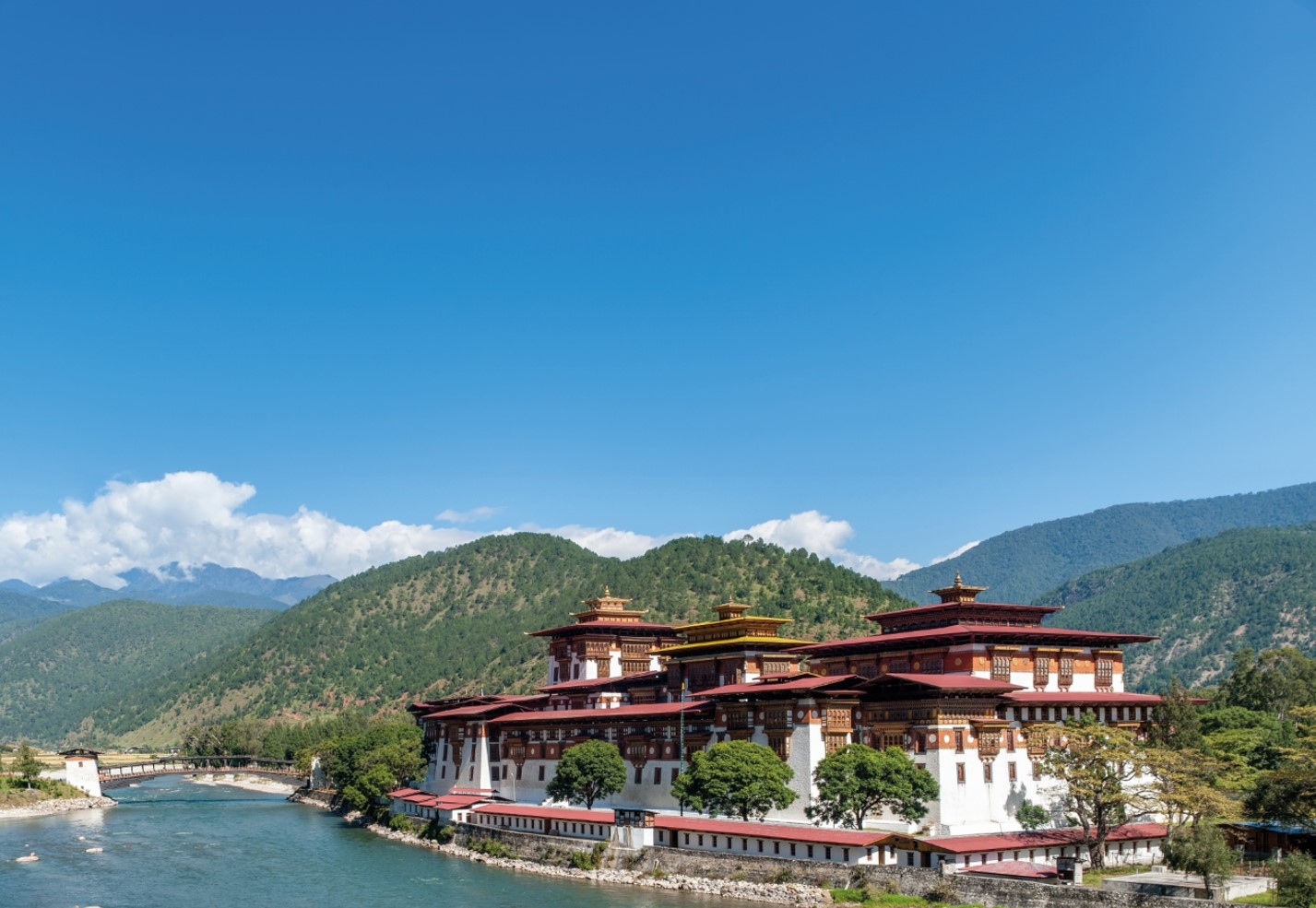Landlocked between its giant neighbours China and India, Bhutan is a tiny country perched high in the eastern part of the Himalayas. It is the world’s last remaining Buddhist Kingdom and is also known as the world’s only carbon negative country. It is only one of many reasons why Bhutan is called the “last Shangri-La”. And it is where I am from.

Food For The Soul
Bhutan is unique in more ways than one. Apart from being home to majestic valleys and the most picturesque of mountains, it also has a very interesting cuisine to offer. The locals’ love of spices can be tasted in a variety of dishes. If you have little tolerance for spicy flavours, your stomach can feel uneasy, but in recent times chefs from various hotels and restaurants have taken their customers’ tolerance level into account to prepare their dishes accordingly.
The best thing about Bhutanese food culture is not just the food but the way it is treated. The food is always served in wooden bowls and eaten with fingers to feel its texture.

Ema datshi is the unofficial national dish of Bhutan. Ema datshi literally translates to chillies and cheese. Bhutanese people eat a lot of chillies as winters in Bhutan are quite cold and people believe that the heat from the chilies help them to keep warm. So the spicier the chillies, the more they are loved by the locals. Ema datshi is the go-to dish for every Bhutanese, it is very easy to prepare and only two or three ingredients are required. Though different homes follow different methods and have their own recipes, cooking the chillies in butter and cheese is the most common way to prepare it. The Folk Heritage Museum Restaurant’s version of ema datshi is a must-order. It is located inside the premise of the Folk Heritage Museum and set beautifully amidst an apple orchard.
One of my favourite dishes is the combination of khule with ezay and suja. Khule is buckwheat pancake. Ezay is a spicy chili salad. And suja is salted butter tea. Bhutanese’ love for chillies can only be compared to their love for tea. It may sound like a bluff, but Bhutanese people drink tea with all three of their meals. We believe that hot tea helps to wash down the rich fatty foods. Whenever I’m back, I will pay the restaurant at the Simply Bhutan Museum a visit. Their buckwheat pancakes are the best in town. Paired with some ezay and hot butter tea, this meal is something to remember whenever you recall your journey to Bhutan.

Another classic dish is shakam paa with nakey, which is dried beef jerky cooked with different types of dried vegetables. The practice of using dehydrated vegetables started back when farming was not feasible during winter so vegetables were dried, preserved and consumed. This dish is not an everyday meal for us but is saved for special occasions like festivals and Bhutanese New Year. The best version is served at Babesa Village Restaurant. Set in an old traditional two-storied Bhutanese house, the owner decided to revamp it into an elegant restaurant serving amazing local cuisine. The restaurant complements the shakam paa with nakey with wild ferns, and the combination is a star among both locals and foreigners.

Pray And Love
Of the many dzongs (fortresses) in Bhutan, Punakha Dzong is a must-see. Located near the adminstrative centre, it is generally recognised as the most beautiful dzong in the country, with its ornate wood carvings and intricate paintings on the walls. In spring the lilac-colored jacaranda trees bring a lush sensuality to the dzong’s characteristic towering whitewashed walls. This dzong was the second to be built in Bhutan, and it served as the capital and seat of government until the mid-1950s. All of Bhutan’s kings have been crowned here. This dzong is still the winter residence of the Dratshang (official monk body).

While you’re in Punakha, another great site to visit is the Temple of Drukpa Kinley the Divine Madman, where you can receive blessings from a wooden phallus, famously known for helping couples conceive. Punakha Valley also boasts a pleasant climate with warm winters and hot summers, making it an ideal respite from the colder valleys of Bhutan. Clinging to a sheer cliff face, 900 hundred metres above the Paro Valley, Taktsang Lhakhang (Tiger’s Nest Monastery) is Bhutan’s Machu Picchu, its Taj Mahal – the cliff-face that launched a thousand postcards. It features in every brochure, book and website about the country. Thanks to Bhutan’s restrictions on visitor numbers, it doesn’t feel overrun. Of course, that could also be due to the lung-bursting trek up a steep, rocky track to reach it. This vertiginous cliff, only 10km north of Paro, was chosen as a meditation site by Guru Rinpoche who, according to legend, arrived here on a flying tiger. The temple has been rebuilt twice, after devastating fires in 1950 and 1998, and you’ll have to arrive on foot, but the view across the valley to the temple, and the quiet aura of contemplation within ensure that a visit to the Tiger’s Nest more than makes up for it.